Before we know what balance point suits you the best, we need to point out your preferred gripping style, and based on that. We can determine your balance point.
The Pinch Grip
You have the pinch grip at the blade, bolster or handle area. The point where you pinch the knife determines the balance point for this gripping style.

Thumb Grip
The Thump grip is when you place your thumb on top of the handle. Your pointing finger determines the balance point of this gripping style.


The Fingertip grip
With the fingertip grip, it is your thumb and middle finger that determine the balance point.

What balance point do you want?
The balance point is more critical for cooks at a restaurant since they do the same task for an hour or two with the same knife compared to home cooks that use them for a few minutes.

Knife styles and the best balance point
There is no such thing as the best balance point. There are multiple knife styles, and the best balance point is different for each person and knife style. Therefore I will tell you what balance point I’m looking for and why I want the balance point to be there for me.

Gyuto, Santoku and the Bunka
My preferred balance point on a Gyuto is at the middle with a pinch grip since it suits my cutting style the best. I use the forward and down motions the most and sometimes use the tip to slice towards me. The knife will not work against me with the forward and down motion, and I’m in control.

When I use the tip to slice, I pull the knife towards me. Therefore I often switch my gripping style to a fingertip grip to get a front-heavy knife to assist me with that task.

With the Santoku and Bunka, I prefer the same balance point.

The Nakiri
When it comes to the Nakiri, I prefer a front-heavy balance point, but I don’t mind a middle-balanced Nakiri. I don’t pull the knife towards me when I use a Nakiri; therefore, I prefer a front-heavy balance point over a middle-balanced one. I’m not too fond of a back-heavy Nakiri because it will fight against my cutting motion.

Knife profile and handle
On some occasions, the balance point is pre-defined. The reason for this is that the knife handle is changed for a specific gripping style. Any other gripping point will be less comfortable since you are fighting against the handle design. So keep that in mind when you buy a knife with a unique handle shape.

Questions
If you have any questions or need help, leave them in the comment section below, and I will try to help you as much as I can. I would love to know your preferred balance point and what knife style you are using, so don’t hesitate to answer in the comment section below.
Knives used in the video and article:
🛒S H O P:
Kai Shun:
NA: Kai Shun Santoku NA
EU: Kai Shun Santoku
NA: Wusthof Ikon Classic
EU: Wusthof Ikon Classic
Japanese made knives
(Japanese artisan knives, recommended to order one from your local Japanese knife import store because of the return policy and warranty).
Shibata Takayuki Bunka Review
Shibata Takayuki Gyuto Review
N O T E S:
The knife used in the video and article is for reference only. There was no particular reason for showing them in the video. At the same time, there are knives that I like, but there were also knives that I still need to test and review.
▶ If you want to know what knife you should buy you can read the following article ''Choosing your knife''. ▶ On my youtube channel, I have reviewed a lot of different knives. You can watch the playlist by clicking here. ▶ Click here, if you want to search for other kitchen knives on: Amazon. ▶ , if you want to search for other Chinese knives on . ▶ Check out my gear on Kit: https://kit.co/ChefPanko ▶ Check out my recommendation on Amazon: https://www.amazon.com/shop/chefpanko Full Disclosure: If you purchase from these links I get a small commission that goes towards supporting the channel and website. As an Amazon Associate, I earn from qualifying purchases ▶ If you have any questions about Japanese knives made in China or about some of the brands feel free to ask it in the comment section below. Thank you for your support and feedback. ▶ Want to work with me? Please use the contact form by clicking here.
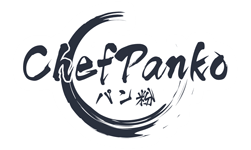
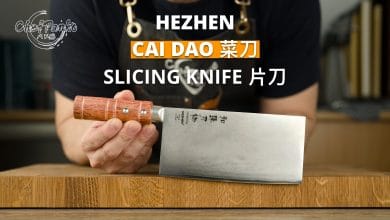
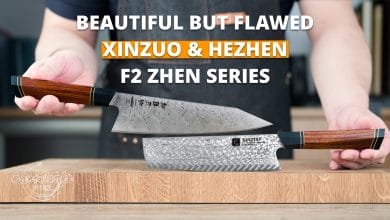
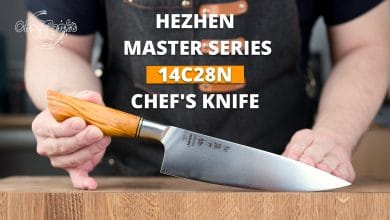
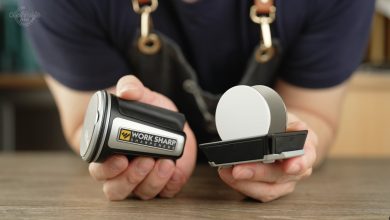
The point where you naturally hold/grip the knife is how I determine the balance point of a knife. From there on, you can determine if it is front, back, or middle balanced based on your preferred gripping style and where you hold the knife.
Giving you the following:
Pinch grip: Thumb and Index finger determine the balance.
Thumb grip: where the knife rest at the Index finger determines the balance.
The fingertip grip: thumb, and middle finger determine the balance.
The following factor of where you want the balance point is more critical for cooks at work since they prep for hours doing the same task for 1 to 2 hours with the same knife.
Yanagiba: Slicing towards yourself, front heavy.
Western Chef Knife: Back heavy, middle balance is okay. (I prefer Back)
Gyuto: Mainly slicing in Japanese cuisine front or middle balance is oke. (I prefer Middle)
Santoku: up and forward motion (I prefer it in the Middle).
Nakiri: middle/front balance (I prefer front heavy).
Paring knife: Since it is used off the cutting board and in the air.
I want a back heavy balance (handle heavy).
Utility knife: Middle or front (you are still on the cutting board unlike the paring knife).
Boning knife: depends on what you debone if it is a chicken, I prefer middle/front (Japanese style Honesuki).
But with a boning knife, I would prefer a knife with a wider comfortable balance zone.
Like with the chicken, the front/Middle balance is my preference. I prefer a back/middle balance zone when making a lamb rack. (so, by a simple handle grip, switch the balance shift with you). I call it a ”wider balance zone”.
And once you know the knife style, what you intend to use it on, then you can decide what balance point you would personally prefer based on your gripping style and usage.
For boning knives, we use it on and off the cutting board when we are maneuvering around the meat, so a wider balance zone is preferable unless you want something specific.